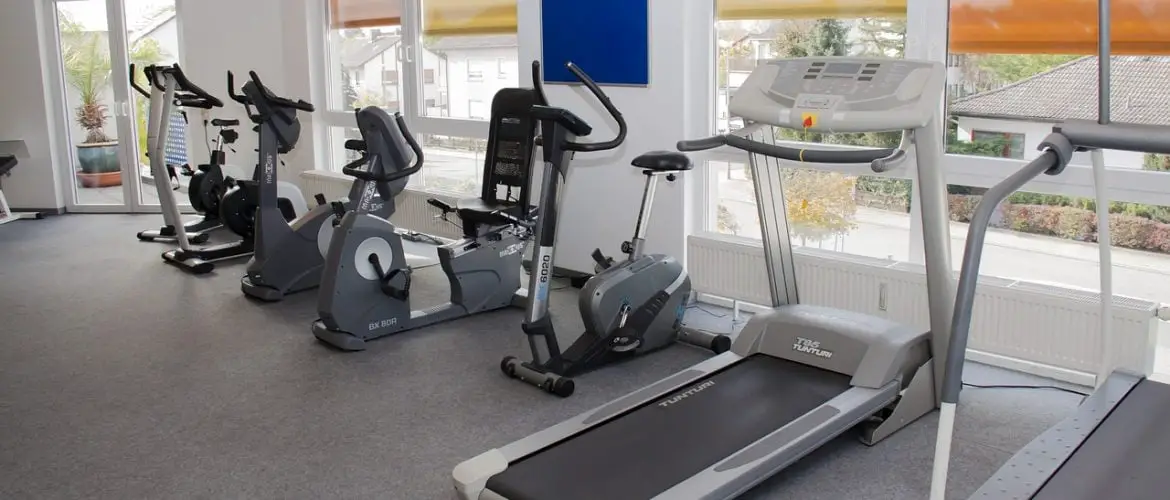Purchasing a brand-new treadmill is a statement of intent, you are making a conscious decision to improve your cardiovascular fitness and possibly lose some body fat. You are putting your money where your mouth is. Treadmills allow people at all levels of fitness to get some exercise, even if the weather is not playing ball.
But are treadmills safe? Alongside all of the frequently mentioned benefits, a word of caution is often heard. With questions being asked about their suitability, “is walking on a treadmill bad for your knees?” is perhaps the most commonly asked.
In this article we are going to examine whether treadmills can actually cause knee pain, and if they do, then how to prevent this from occurring. First though, we are going to look at some common knee injuries and how they occur.
Anatomy of the Knee
The knee is a hinge joint which attaches the tibia, fibula, and femur bones together as well as the patella (knee cap). The knee also contains several ligaments that attach bone to bone, and a couple of tendons that attach muscle to bone. The main ligaments in the knee are:
- Patellar Ligament (also called Patellar Tendon as it also attaches muscle to bone)
- Transverse Ligament
- Tibial Collateral Ligament (also known as Medial Collateral Ligament or MCL)
- Posterior Cruciate Ligament (PCL)
- Anterior Cruciate Ligament (ACL)
- Fibular Collateral Ligament (also known as Lateral Collateral Ligament or LCL)
The knee also contains cartilage, the medial and lateral meniscus are types of cartilage that are used to absorb shock in your knee. These can tear and are a common knee injury.
Your knee is also surrounded by muscles, the quadriceps, hamstrings, and the muscles of your calf. Injuries or tightness in these muscles can have a knock-on effect on your knee health.
Common Knee Injuries
There are many different ways in which your knee may become injured, some of the injuries that are associated with knee pain aren’t even located in the knee! IT Band Syndrome for example, does not affect the knee in any way. It is caused by tightness and inflammation in the iliotibial band, a tendon that connects your hip to your knee. This causes pain in your knee, but to fix it you need to increase the flexibility of your IT band.
The most commonly reported knee injury is patellofemoral pain syndrome (also known as runner’s knee). This is often caused by either poor running technique or a muscular imbalance in the muscles that surround the knee, i.e. the quadriceps and hamstrings.
Anterior Cruciate Ligament damage is a fairly serious knee injury, it occurs when the ligament is stretched too far and tears. This can occur when you change direction quickly or have to stop abruptly, or if you are tackled in a sport like football or rugby. Posterior Cruciate Ligament injuries can occur in the same way.
Meniscus tears are quite common, this is where the cartilage that makes up your medial or lateral meniscus is torn, usually as the result of an unexpected twisting movement (catching your foot in a rabbit hole for example).
Then there is Patellar Tendonitis, which is caused by overuse, usually in long distance runners, but also in the elderly. Finally, there are fractures which are caused by accident.
There are two main types of injury, there are chronic injuries which stem from overuse, bad technique, or muscular imbalances. Then you have acute injures, which are caused by accident. For example, tripping up, or a bad tackle, or dropping something onto your foot. We will now look at the likelihood of either an acute or chronic knee injury occurring while walking on a treadmill.
Is Walking on a Treadmill Bad for your Knees?
While most physical activity has some low-level injury risk associated with it, walking is perceived to be the safest form of physical activity there is. Of course, injury is still possible. Bad walking technique can lead to overuse injuries, and the risk of falling over, bumping into something, or twisting your knee after slipping on something are ever-present.
But walking on a treadmill removes a lot of these issues. Unless the treadmill is poorly maintained the risk of tripping up or slipping on it are almost zero. There is no chance of any sudden changes in direction, which is one of the most common causes of knee injuries. You’re not going to bump into any objects, and you would have to be incredibly unlucky/unpopular to be tackled on one.
The only time when the treadmill may pose a danger is when climbing on to it or climbing off of it before it has safely stopped running. But once you understand the risks associated with this you are unlikely to make this mistake – the sight of someone actually falling off a treadmill (even when sprinting) is actually incredibly rare.
But what about chronic injuries? How likely are these to occur when walking on a treadmill? Firstly, it is important to note that walking on a treadmill does not alter your technique in any way when compared to walking outside on a flat surface. Sure, it is different to hiking, where you have to traverse difficult terrain, and deal with the elements. But this actually lowers your risk of injury rather than increasing it!
So, if walking on a treadmill is no more dangerous than walking outside on a flat surface (in excellent weather conditions) what we need to ask next is whether walking itself is inherently dangerous?
Chronic knee injuries from walking are pretty rare, overuse injuries are possible, though you’d need to be walking for a very long time! Another potential cause would be a muscle imbalance. Again, this has nothing to do with treadmills, and is something that needs to be addressed with resistance exercises that target the hamstring, quadriceps, calf muscles, and gluteals.
Bottom Line: Walking on a treadmill is in no way bad for your knees compared to walking outside, in fact it may even be safer. Walking in general is very low risk, but as with any form of physical exertion there is a small risk of knee injury, but the benefits outweigh any risks.
Is Walking on a Treadmill Good for your Knees?
Let’s turn this question on its head and find out whether walking on a treadmill may actually be good for your knees rather than bad! There are many benefits associated with walking more, studies have repeatedly shown that walking 10,000 steps per day can help you to lose excess body fat and more importantly, keep that weight off.
Walking can lead to weight loss, which can in turn take pressure off your knees. Sadly, the more we weigh, the more pressure we put on our joints. What’s great about walking is that it is so accessible. Sure, there are people who can’t walk, but the majority of people can. Even the morbidly obese. Finding a way to increase your walking should be the first step (pun very much intended) for anyone who is looking lose weight and improve joint health.
Walking can also help to strengthen the muscles that surround the knees, as well as increasing bone density and improving joint health. Meaning that you can survive falls better and reduce your risk of injury.
So far, we have mentioned the benefits of walking, but this is walking that could be done inside or outside. Let’s look at some specific treadmill-related benefits, (of course, this will re-tread ground we’ve already covered earlier):
- Treadmill allows you more control over stride length
- Treadmill reduces the risk of falling, slipping, or colliding
- Treadmill is used inside so no adverse weather conditions
- Treadmills only travel in straight line – no risk of change of direction related injuries
- Treadmills use an even surface
As you can see, not only are treadmills safe to use, they can actually help to improve knee health by increasing stability and strength. They are safer than walking outside, which is already a very low-risk form of exercise.
Final Thoughts
If you are considering purchasing a treadmill but have been put off by the worry that walking on a treadmill may be bad for your knees, then please relax. Walking on a treadmill is not bad for your knees, instead, it is good for them. There are so many other benefits too, walking on a treadmill can reduce stress levels, can inspire creative thought, and improve mood.
It can also help to build lower body strength, strengthen your core, and help you to lose some body fat. There are cardiovascular benefits too. If you find the idea of exercising outside scary, or have little motivation to do so, then walking on a treadmill is a fantastic solution. You can do it while listening to a podcast, watching a tv show, or listening to music. You can do it during a storm, or during a heatwave. You can do it safely and you will reap the benefits.






